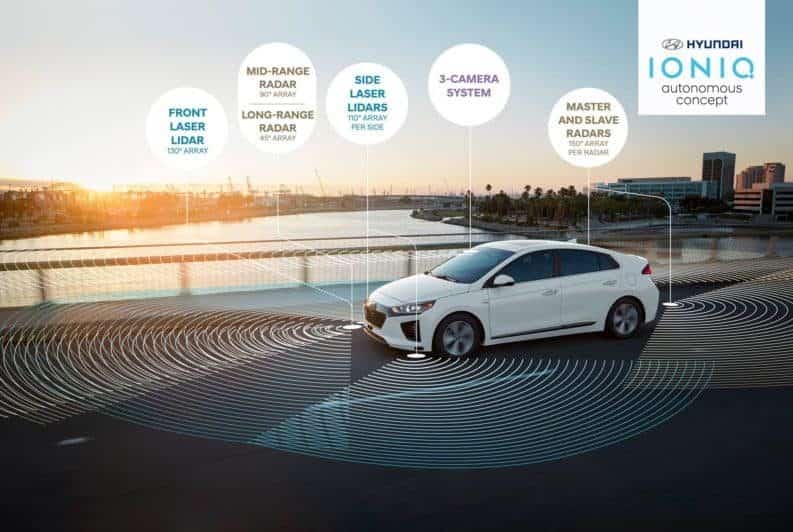And just like that, Hyundai has a fully-fledged autonomous (self-driving) car. Seemingly overnight. At the Consumer Electronics Show, the place where automakers show off their latest and greatest gadgets (and of course, electronic cars), Hyundai debuted its autonomous version of the upcoming Ioniq. The brand claims its robot-car is going to be much more affordable. How? Because the company said it uses cheaper sensors and less computing power at the wheel, in turn, bringing down the overall price. Personally, I’m skeptical about this. I mean, cheaper sensors in a self-driving car? Is that really a good idea? On test drives, it’s seem to have done okay. But, I’m still worried the cheaper parts might malfunction — eventually.
Then again, I’m the type of person who could cause the most primitive electronic device to malfunction just by walking past it.
What The Ioniq is Offering
By providing cheaper parts, the Ioniq is offering something that we haven’t seen yet: the promise of an affordable self-driving car. With all the fancy technology that goes into creating other self-driving cars (especially from companies like Volvo) consumers can expect expensive MSRPs. Hyundai is, obviously, trying to capitalize on that fact by getting in on the affordable self-driving car game before other brands.
On top of that, the Ioniq models have an extremely low profile. Even the test cars that were used have no indicators that they were test cars. The stereo camera, traffic light camera, and pedestrian LDW camera are all sitting in the interior, at the top of the windshield; while the radar is nestled in the center of the grille behind the logo, and the LIDAR sits at the very bottom of the bumper on both the far ends and in the center.
If you don’t notice that (and you can’t even notice most of it), it just looks like a regular sedan. Pretty cool, to be honest.
Cheaper Sensors in a Self-Driving Car… Is that Good Idea?
But, the fact that those sensors sitting in the front are “cheaper” is really concerning me. After all, this is a vehicle that will be traveling on the roads eventually, and the lives of the driver, passenger, and others on the road are all in the hands of those sensors.
On the other hand, I know Hyundai would never do anything that might endanger the lives of others. So, it’s most-likely just paranoia on my part. Of course, Hyundai does need to do a bunch of test drives first before these vehicles are released, and the company already started.
Guess My Worries Are Foolish
It’s because of these test drives that my worries seem foolish. The Ioniq traversed a test track in LA multiple times without an issue. No awkward stops or movements, and it could read everything it had to for a flawless finish. Even the speed was right on the money, which means Ioniq drivers (sitters?) won’t be getting any speeding tickets.
Of course, I’m sure there will be much more testing to come. But at this point, it’s surprising to hear of such a well-performing autonomous car, especially one that has cheaper components. Fingers crossed it doesn’t run into any issues because no issues means the world of affordable autonomous cars is closer than we originally thought.




